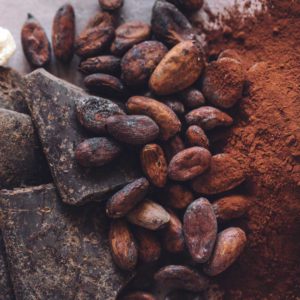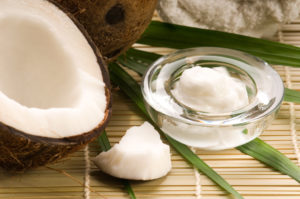A growing body of scientific evidence proves that cocoa products are antioxidants, anti-inflammatory, support the body’s endogenous defense system, and are critical to maintaining healthy skin.
Clinical data prove the undeniable fact of the positive effect of cocoa on the main cellular processes of our body and signaling pathways involved in the detoxification of reactive substances and the removal of pro-inflammatory mediators. In addition, since cocoa contains a mixture of biologically active components, it is used for diseases such as skin cancer, psoriasis, acne and wound healing. Cocoa has great potential not only for the treatment of skin diseases, but also for their prevention. In particular, the antioxidants found in cocoa protect the skin from the inside, neutralizing oxidative stress, a factor in the deterioration of the skin structure and premature aging.
The fruits of cacao (Theobroma cacao L.) are the basis for the production of the most important and common functional foods in human history. The origin of cocoa can be traced back more than three millennia, and it was used for food and medicinal purposes by the Aztecs and Mayans. Numerous testimonies of those times focused the attention of world scientists on the various health benefits associated with the consumption of cocoa products. Although the cocoa plant contains a huge range of useful components, processing and production change its properties and biologically active components, especially during roasting, fermentation and drying.
The chemical profile of roasted cocoa beans is quite complex, and the main compounds that define the variety of their useful functions, there are natural phenoloids, theobromine and magnesium, which are formed in the process of their production.
Biologically active compounds of cocoa and minerals of cocoa products
Polyphenols
Cocoa, like any edible plant, is rich in minerals and biologically active compounds. The phytochemical properties of cocoa beans depend on its varieties and are a rich source of polyphenolic compounds with a large amount of flavonoids, in particular flavanols, also known as flavan-3-ol.
Polyphenols are involved in the protection of plants from herbivores, harmful bacteria and UV damage, so it is believed that the use of high-quality flavanol-rich cocoa improves blood circulation in the skin, increases its protection against harmful environmental factors and contributes to the preservation of skin health.
Theobromine
In addition to polyphenols, cocoa contains methylxanthine compounds, mainly theobromine and caffeine. The average content of individual methylxanthines depends on the genotype of the cocoa tree. Theobromine belongs to a group of purine alkaloids that can cause various physiological effects, and they are synthesized in a limited number of plant species, including tea, coffee and cocoa.
Recent studies of cocoa have confirmed theobromine’s ability to increase serum HDL cholesterol. In addition, theobromine stimulates the heart muscle, relaxes the bronchial smooth muscles in the lungs and plays an important role in the transmission of intracellular signals. It is noteworthy that theobromine has antioxidant activity, and only some antioxidant compounds can be an effective treatment for depressive disorders. The fruits of the chocolate tree are endowed with these qualities.
Minerals
Cocoa beans are extremely rich in minerals important for the vital activity of the human body, such as magnesium, copper, potassium and iron. Most of these minerals affect the condition of our blood vessels and lymphatic system.
The predominant mineral found in cocoa is magnesium, which catalyzes many biological reactions, including protein synthesis and energy production. In addition, magnesium is an antiarrhythmic and hypotensive agent, and its deficiency is associated with metabolic syndrome, insulin resistance, and diabetes. Dark chocolate is also an important source of copper, and this mineral is necessary for processes such as iron transport, glucose metabolism, fetal growth and brain development. In addition, cocoa products are rich in iron, but they are relatively low in potassium.
The potential positive impact on human health of biologically active substances present in cocoa is well documented. The results of many epidemiological studies call for regular, moderate consumption of cocoa and chocolate to reduce the risk of developing many chronic diseases, and the various beneficial qualities of cocoa compounds determine its antioxidant and anti-inflammatory effects.
The article is based on the works of the following authors: Scapagnini, G.; Davinelli, S. and Gonzalez, S. wrote the paper. Micali, G. and Gonzalez, S. contributed to dermatological aspects. De Lorenzo, A.; Renzo, L.; Olarte, H. and Cicero, A. contributed to nutritional aspects. Scapagnini, G.; Davinelli, S. and Olarte, H. contributed to molecular biology aspects. Micali, G.; De Lorenzo, A.; Renzo, L. and Cicero, A. contributed to the conclusions and reading the manuscript.









